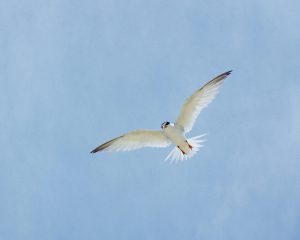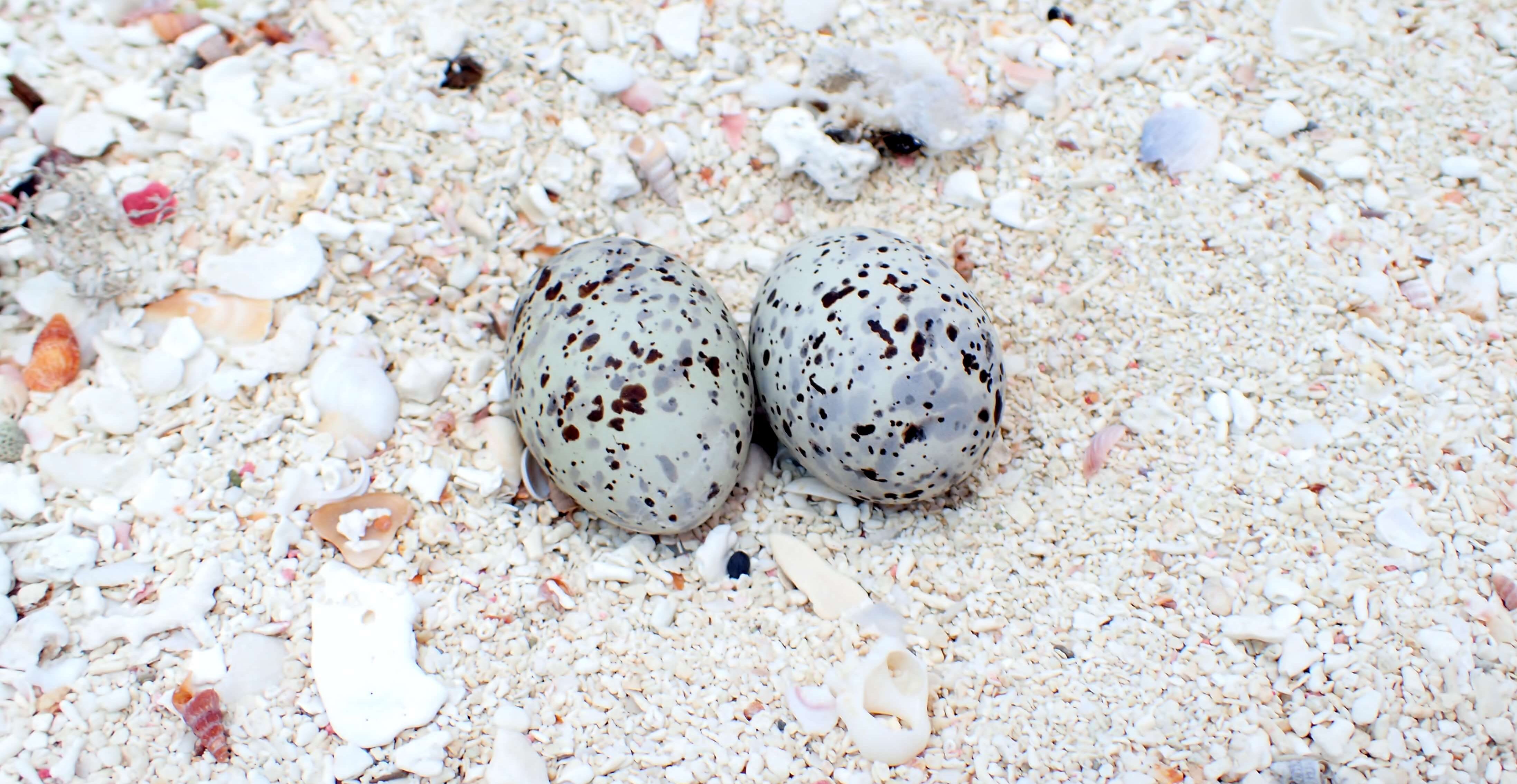In Cozumel, we are passionate about watersports. We are also nature lovers. This means we are extremely conscious of our surrounding environment. Whether we are kiteboarding or paddle boarding, we are especially careful of where we step.
Why? If you look closely, you may spot least tern eggs. They are all over Cozumel’s coastline right now and are very well camouflaged.
There are a variety of tern species in Cozumel. Terns are often referred to by locals as Golondrinas Marinas or Charranes.
 The least tern’s scientific name is Sternula antillarum. They are the smallest in the tern family.
The least tern’s scientific name is Sternula antillarum. They are the smallest in the tern family.
Least terns reproduce from April to July in Cozumel. They are romantics. To begin courtship the male presents a female with the gift of a small fish. Terns can lay 1 to 3 eggs at a time. We usually come across eggs in pairs.
Their chosen breeding areas are wide flat beaches made up of coarse sand or shell. This leaves them highly exposed to larger predators.
The adult least terns do the best they can to protect their young by nesting in colonies. We have unexpectedly witnessed some of their protective behaviors. For example, we have unknowingly approached a nesting area and heard warning calls from Terns on the ground signaling to back off. We abide by these warnings and give them as much space as possible.
 Occasionally an unintentional discovery of eggs has been interpreted by the least terns as a “more serious threat”. As a result, we have been dive bombed by multiple birds sounding shrill emergency alarms. Our response has been and will continue to be, to evacuate the area as quickly as possible. Always watching every step we take in order not to harm any eggs.
Occasionally an unintentional discovery of eggs has been interpreted by the least terns as a “more serious threat”. As a result, we have been dive bombed by multiple birds sounding shrill emergency alarms. Our response has been and will continue to be, to evacuate the area as quickly as possible. Always watching every step we take in order not to harm any eggs.
We make sure our customers are aware of this phenomenon. This helps them take in this natural spectacle without disturbing the life cycle of these beautiful birds. We most commonly spot terns and their young in remote areas of the island during our Mangrove SUP Tour , our Caribbean SUP Tour or during Kiteboarding Instruction.
Thanks to the following sources for confirming and expanding on the information we have locally experienced: National Audubon Society , Sal a Pajarear Yucatan by Barbara MacKinnon, Common Birds of the Yucatan Peninsula by Eduardo Llamosa Neuman.

